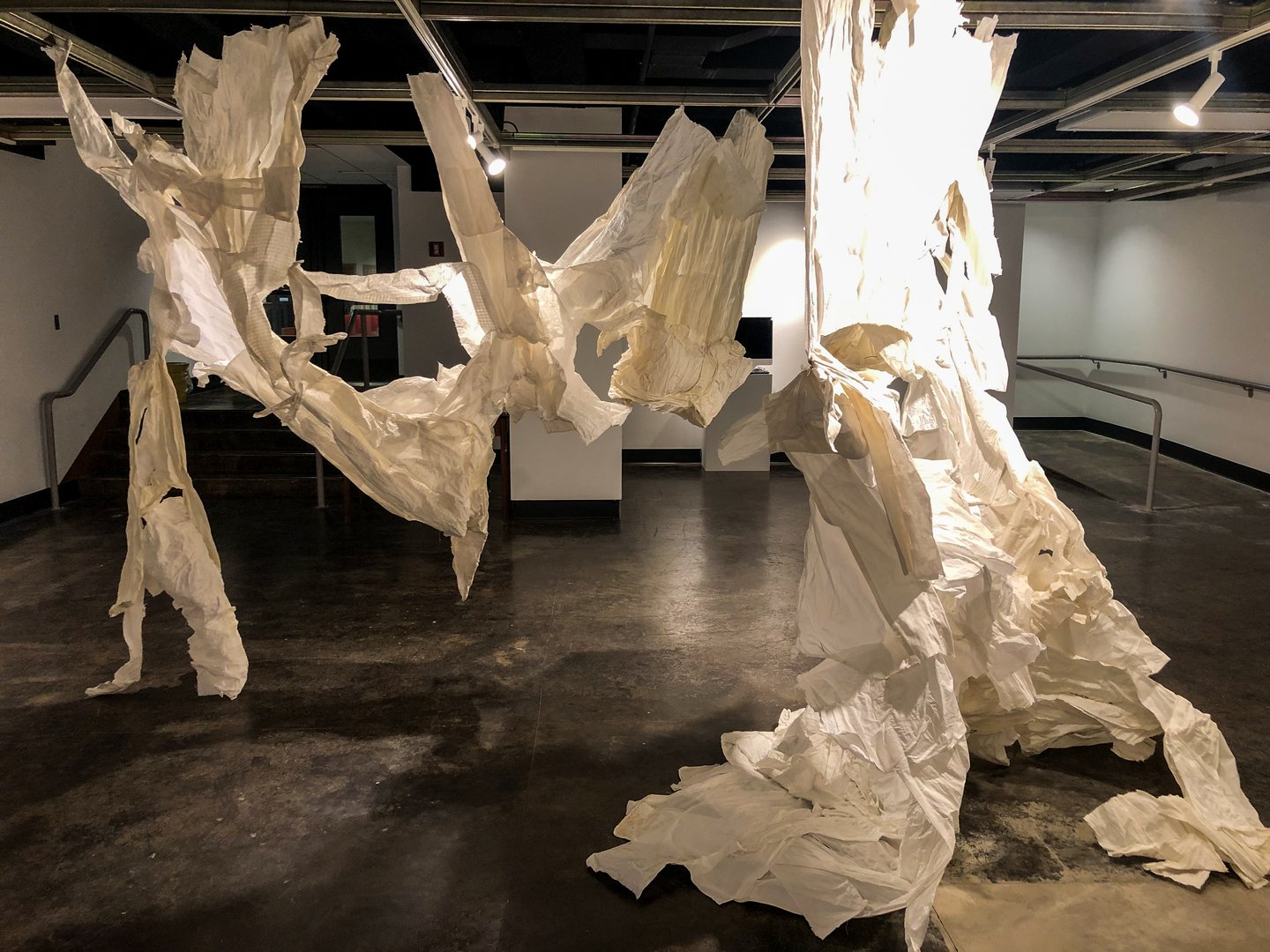"Space Inhabitation I"
by Madeline Moser
Fabric/textile with cornstarch and wire supports
- 8' x 6' x 3' (2021)
My art is an exploration of human performance within the physical and social confines of space. As an individual interacts with specific spaces, we are informed by the physical confines of the space, the built and natural environment, as well as the social consequences of our presence within the space. The body is at the core of my investigations and is key in highlighting how our performance within society is a direct reflection of our surrounding physical and social environments. Through large-scale, ephemeral installations made with light, fabric, wire and glue, my work aims to manifest the physiological and psychological exchange between our bodies and their relationship to the space that holds us. In sociology, the habitus is used to describe how our living conditions act as enablers or constraints within developing and enacting different lived experiences. The habitus informs how different structures of perceiving, thinking and feeling are informed by different socialized norms. I am investigating how society becomes deposited within performativity as a navigational tool-- one that is ambiguous while simultaneously acting as a totalitarian indicator--and how it reconstructs human engagement as nothing more than a mere reflection of taught, hierarchical societal values. In this body of work, I am taking the idea of the habitus and turning it into a 3-dimensional entity in order to explore how personal dispositions, traits, skills and so on instruct our personal performance. This work remains abstract and monochromatic to make the viewer’s interaction with the work an intrinsic part of these sheets of fabric becoming an actualized work of art. By using fabric in this sculpture, the viewer is able to draw a relationship between the ways materials influence our navigation through the social world. The barriers created by the fabric conduct the viewer’s performance in a similar manner as social constructs and the habitus. The viewer has to reorientate their spatial arrangement according to the layout of the sculpture, making the sculpture the conductor of the entire interaction and the physical manifestation of the habitus





